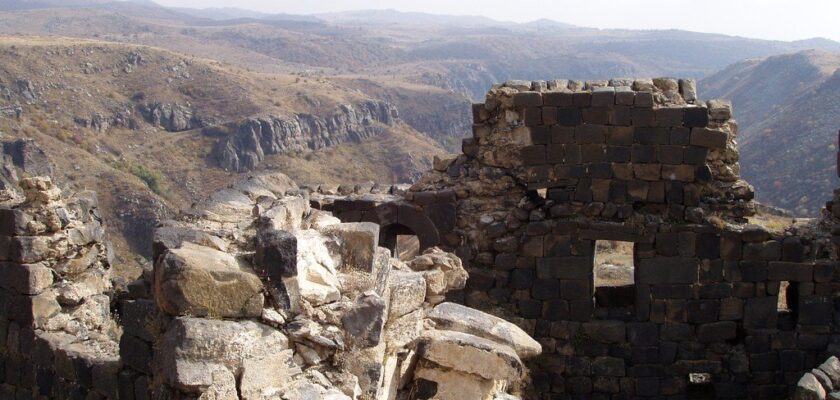Amberd Fortress (Armenian Ամբերդ)
Amberd Fortress is a historical complex on the slope of Mount Aragats in Armenia of a 7th century castle and an 11th century church. Amberd is located 2,300 meters above sea level.
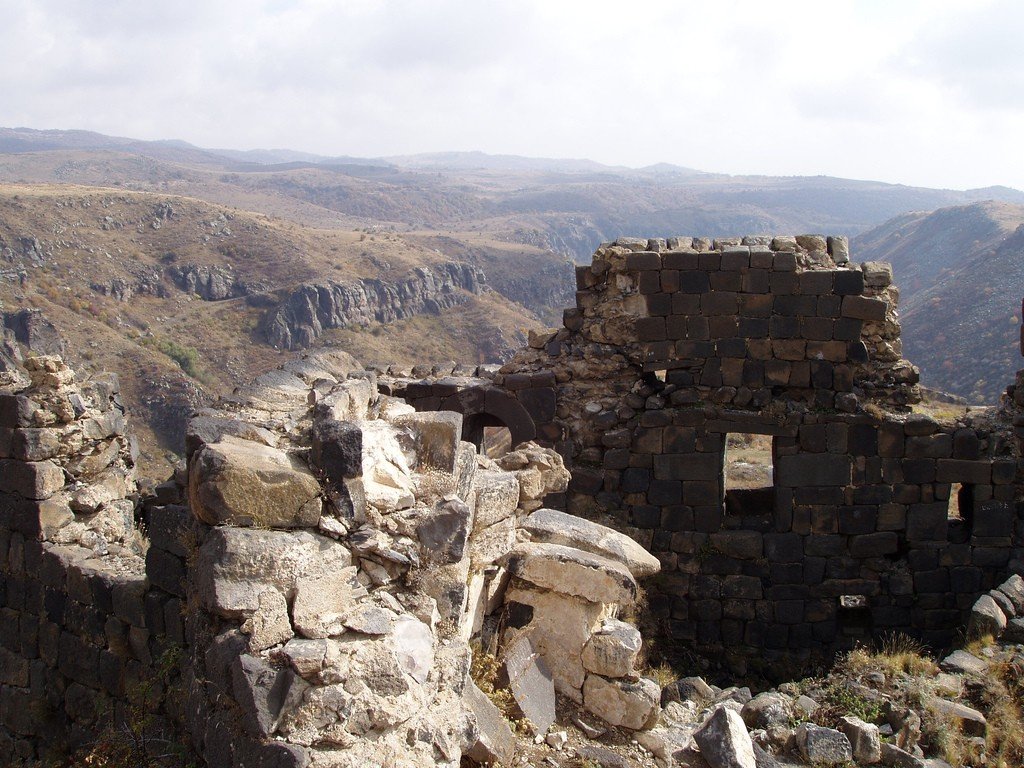
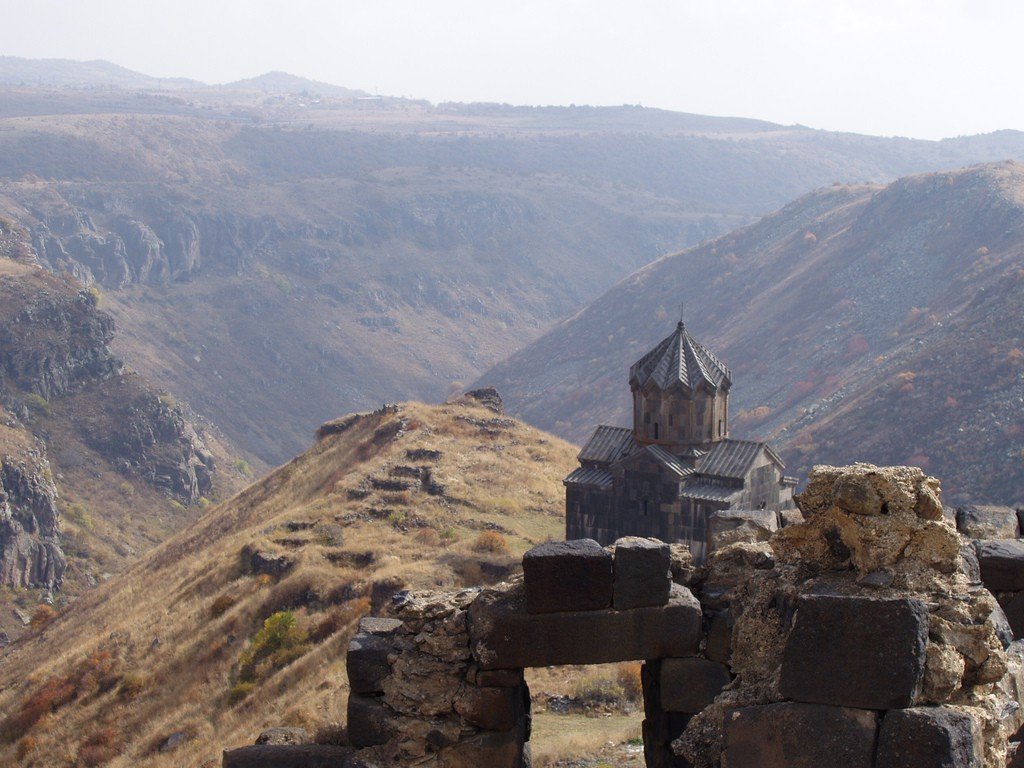
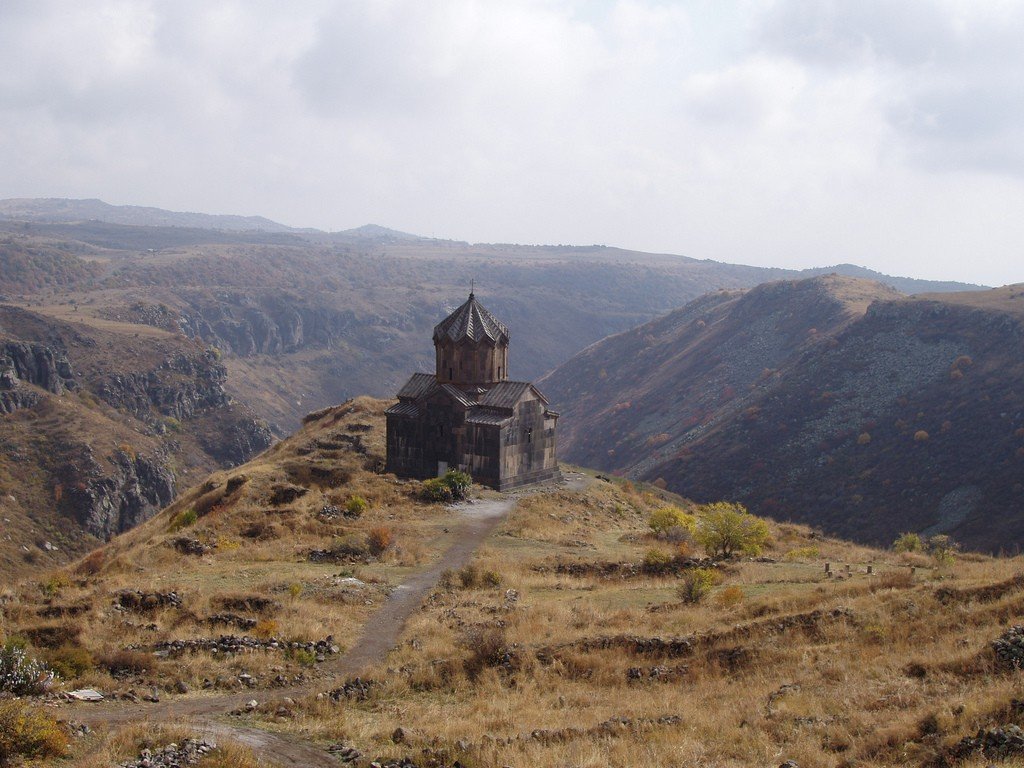
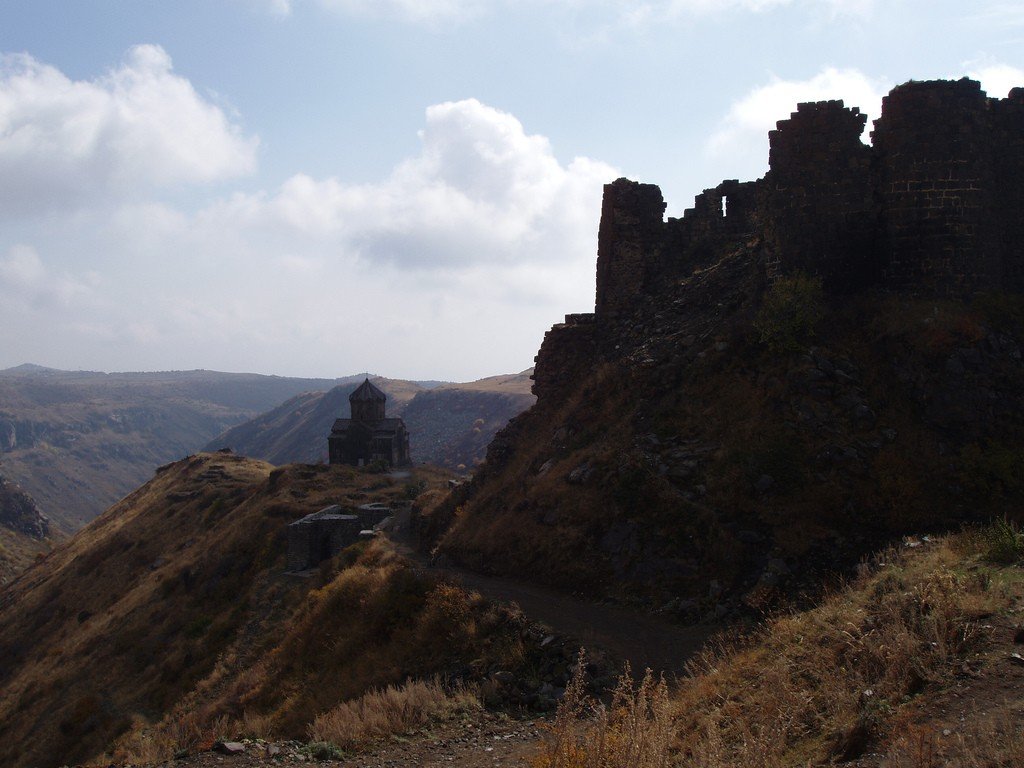
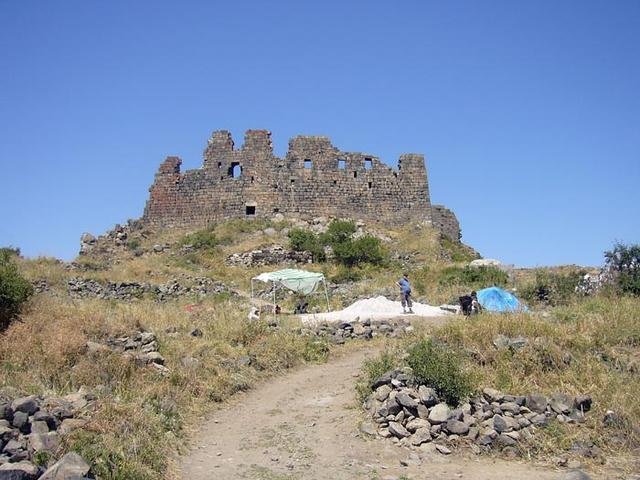
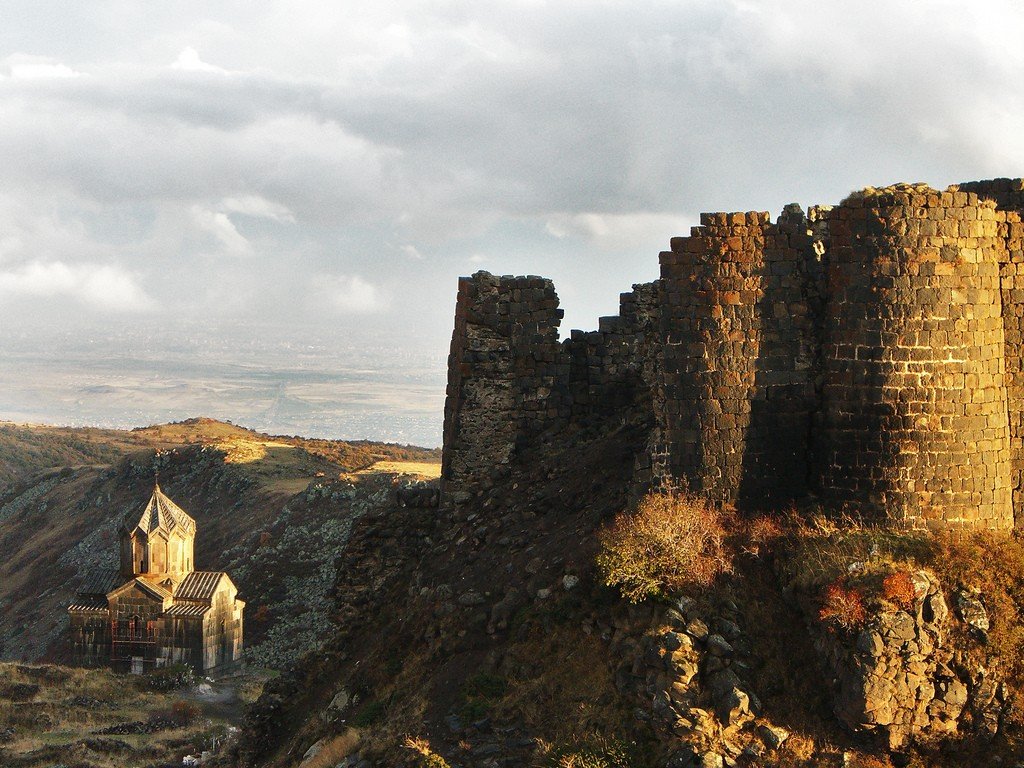
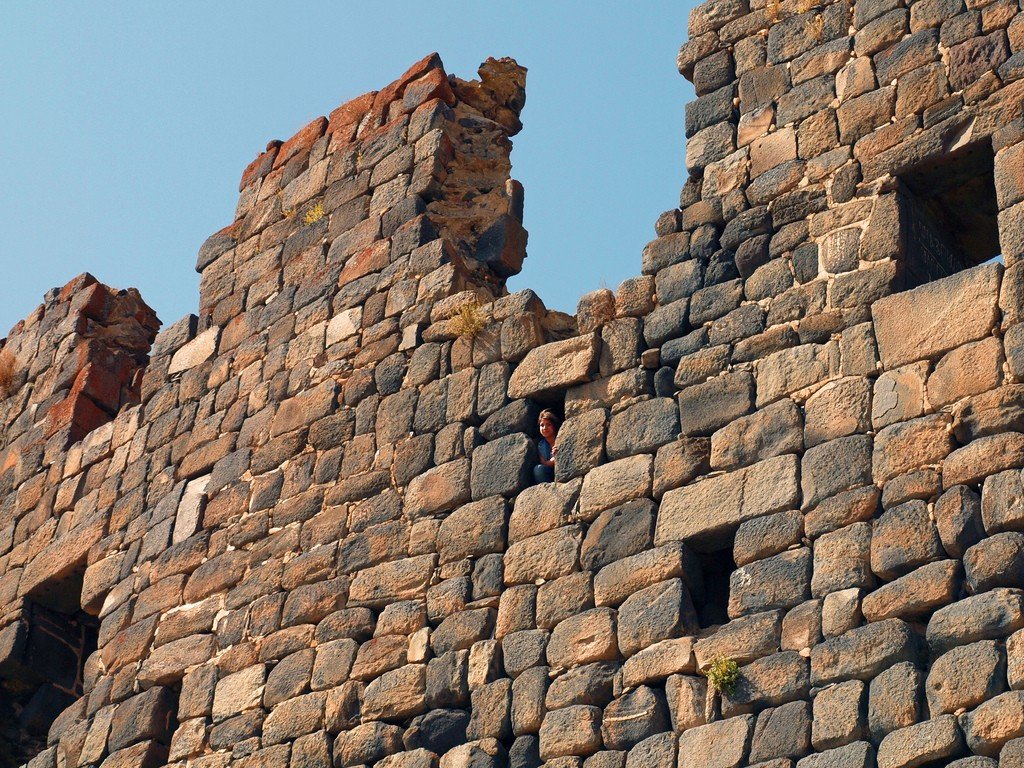
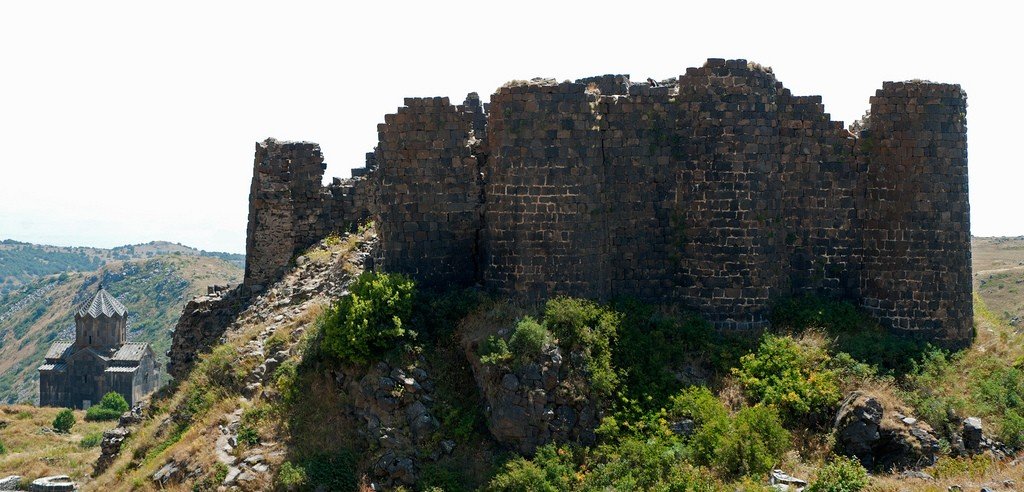
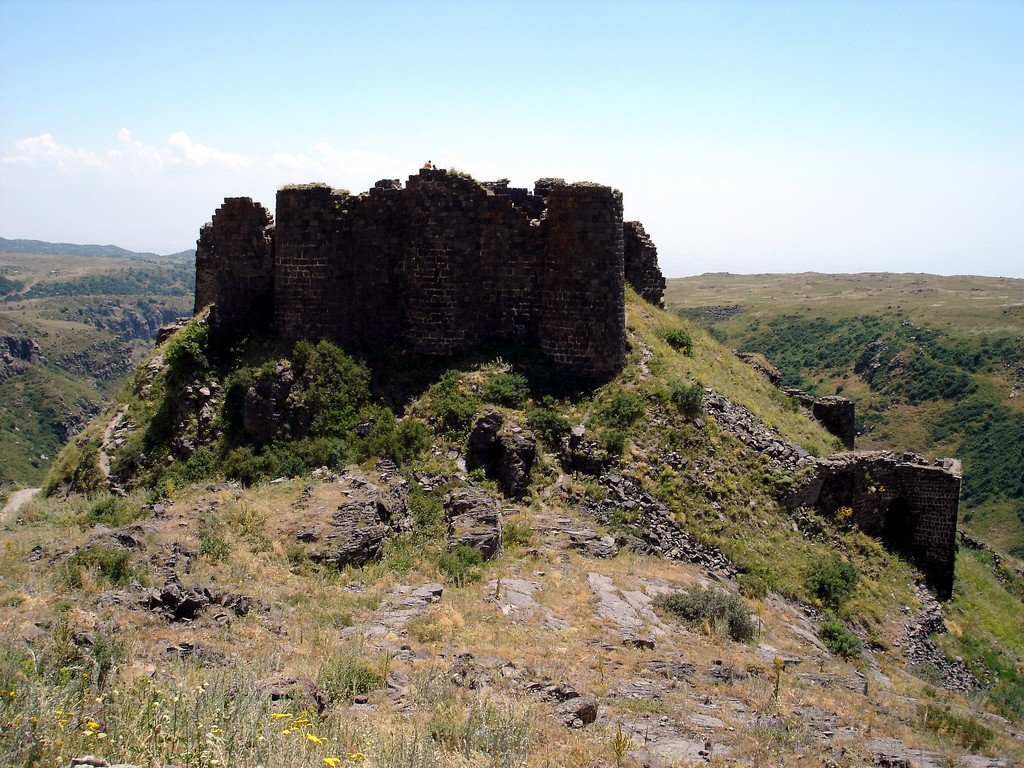
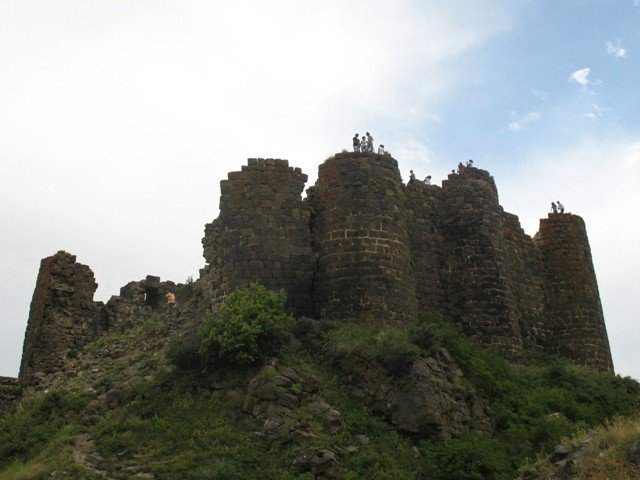
Location
Feudal castles like Amberd were erected in numerous places in Armenia to protect its land from the Romans and Parthians, then from the Byzantines, Persians, Tatar-Mongols, and Turks.
Armenian builders were extraordinary fortifiers, they built their fortresses using natural defenses. It could be a rocky promontory at the confluence of mountain rivers, or an impregnable cliff connected to the mountain massif by a narrow strip of land. The ruling princes sometimes built their fortresses high in the mountains, where it was more difficult for the enemy to reach. In addition, they understood perfectly well how important it was to keep the sources of irrigation systems in their hands.
This is exactly what the builders of Amberd Castle Fortress did. It was erected on a promontory bounded by the precipices of deep gorges. The most elevated part of the fortress is occupied by a multi-storey castle. Researchers assume that its basis is a fortification of the VII century. The castle rises above a small settlement of fortress servants. Powerful walls of the fortress made of large basalt blocks surround the cape from all sides, making it impregnable. A ring of catchment dams on the southern slope of Aragats above the fortress held water after snowmelt, from there it flowed to Amberd, the fortress was also fed by springs located much higher up the slope..Architecture
Amberd has all the characteristics of a feudal nest: the choice of a place protected by nature itself; the system of fortifications; the care taken to supply the inhabitants with water both in peace and during sieges. The architecture of the castle and fortress is simple, severe and subordinate to the main requirement – to reliably protect against attacks. The large stone blocks of the walls must take on themselves the blows of enemy throwing projectiles and wall-breaking guns. There are no decorations, only bright spots of earthenware plates, embedded in the masonry under the teeth of the towers, striking the evil eye according to the belief.
.
The castle building stretched across the promontory and was fortified with towers on the outside. Inside, it was divided by a longitudinal wall into two halves – one, adjacent to the towers, served as a corridor, the other had five rooms arranged in a row. This layout was probably in all three floors. The floors of the castle were flat, made of wooden beams, with a door leading into it from the settlement side, locked by a stone slab, which was held securely against the onslaught of thick beams. Iron bars protected the few windows from uninvited guests. Above the entrance, loopholes were cut into the wall, from where the attackers were dealt with in a hail of arrows and stone nukes..
The guest ascended the castle by a wide stone staircase leading to the grand chambers of the upper floors. Here, among the carpets and fabrics that customarily covered the walls and floor, he could rest after a tiring journey, admiring the gray Ararat through the windows. Here he could refresh himself with cold water, which was brought from distant springs to the vaulted cistern in the lower floor by a water pipe made of clay pipes. When the first stars lit up in the sky, the fluctuating flames of bronze lamps cut through the gloom of the chambers, aromas of resins flowed from figurative smokers, amber wine brought from Ashtarak or Vagharshapat gardens poured into precious goblets and painted earthenware bowls.
Bronze lamps, smokers and mortars, fragments of earthenware, toilet bottles made of painted Egyptian glass and other objects of material culture of that epoch were found here during archaeological research.
.In 1026, at the command of the famous military commander Vahram Pahlavuni, one of the best churches of Armenia was built in the fortress. The architect erected the church on a severe cliff, and its architecture is also severe, which is enlivened only by the framing of the southern door, made in large forms. A small bathhouse, preserved in ruins near the castle, probably belongs to the same period.
History
It is believed that Amberd Castle was founded by the princes of Kamsarakan, then the castle passed into the possession of the Armenian commander Vahram Pahlavuni. It was later bought by the Armenian rulers of the Bagratuni dynasty, who turned the castle into the main outpost of their kingdom.
The castle was first captured by the Seljuk Turks in the 11th century, in the 13th century the castle was finally destroyed by the Mongols in 1236.
.